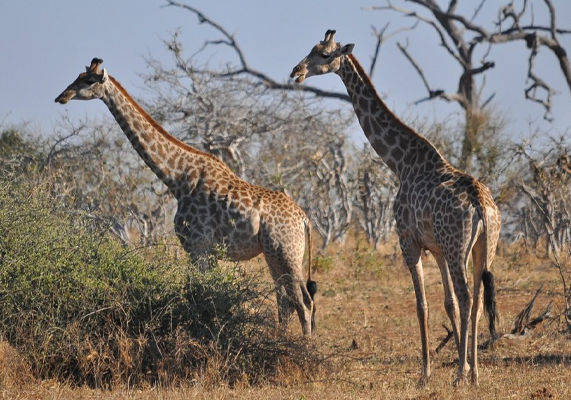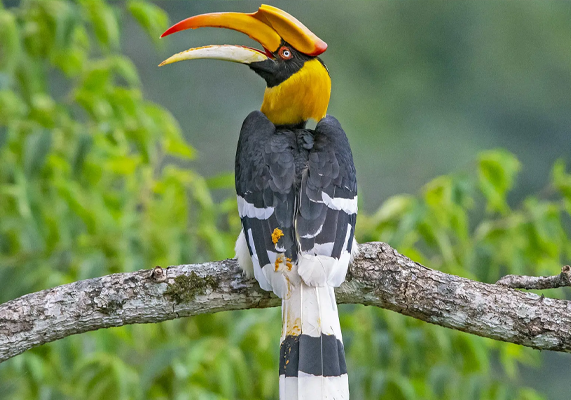Flora and fauna
About one-sixth of Nagaland is covered by tropical and sub-tropical evergreen forests—including palms, bamboo, rattan as well as timber and mahogany forests. While some forest areas have been cleared for jhum cultivation, many scrub forests, high grass, and reeds. Ntangki National Park, Pulie Badze Wildlife Sanctuary, Fakim Wildlife Sanctuary and Rangapahar Reserve Forest are some natural reserves in Nagaland. Some noteworthy mammals found in Nagaland include the slow loris, Assamese macaque, pig-tailed macaque, stump-tailed macaque, rhesus macaque, capped langur, hoolock gibbon, Himalayan black bear, dhole, occasional Bengal tiger, Indian leopard, clouded leopard, marbled cat, golden cat, Indian elephants, gaur, red serow, sambar, Chinese pangolin, Malayan porcupine, Asiatic brush-tailed porcupine, and Hoary bamboo rats



Nagaland has a rich birdlife with more than 490 species. The great Indian hornbill has a place in Naga culture. Blyth's tragopan, a vulnerable species of galliform, is the state bird of Nagaland. It is sighted in Mount Japfü and Dzüko Valley of Kohima District, Satoi range in Zünheboto District and Pfütsero in Phek District. The state is also known as the "falcon capital of the world."
Mithun (a semi-domesticated gaur) is the state animal of Nagaland and has been adopted as the official seal of the Government of Nagaland. It is ritually the most valued species in the state. To conserve and protect this animal in the northeast, the National Research Centre on Mithun (NRCM) was established by the Indian Council of Agricultural Research (ICAR) in 1988.
Nagaland is home to 396 species of orchids, belonging to 92 genera of which 54 having horticultural and medicinal economic importance. Kopou is also used for festive hairstyle decoration by women in India's northeast. Rhododendron is the state flower. The state has at least four species which is endemic to the state.